ROD HISTORY
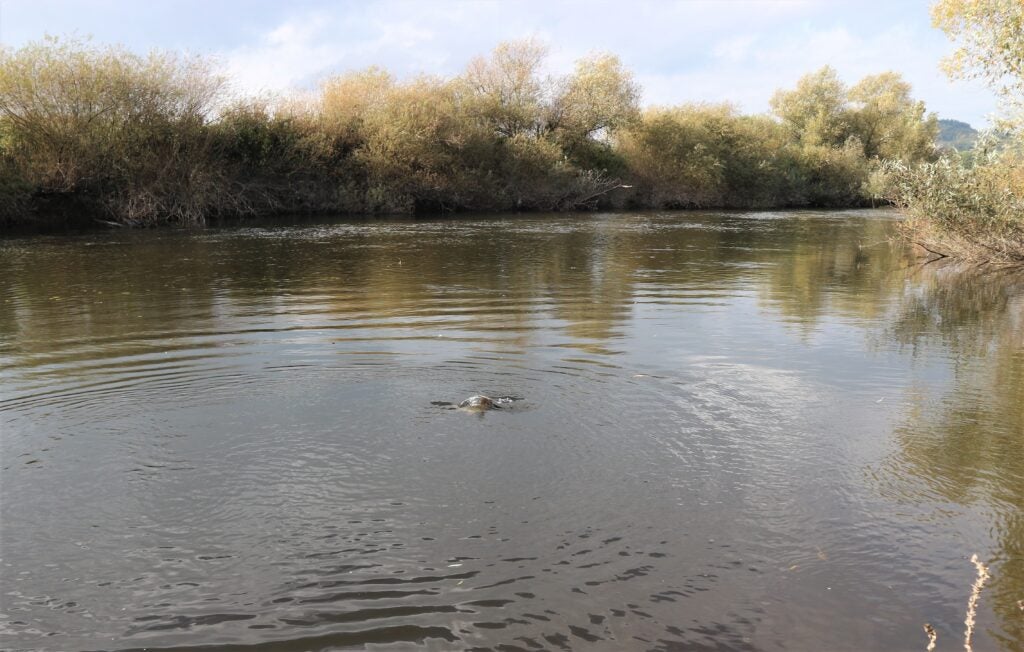

The first 13ft float rod I proudly purchased was a fibreglass Hardy Matchmaker. I spotted one in the museum at Alnwick when I worked for the famous company. My next notable investment was in a revolutionary Normark carbon blank, which Jack Simpson of Turnford fitted out for me. Another irony here, because I ended up working for Normark France a few years ago, pleading with them to put their iconic name back into state-of-the-art coarse rods. They wouldn’t do it, insisting it’s a corporate title now. It looked like I would have to be content with the multi-award-winning Hardy Marksman Supero rod range I designed over a decade ago. I thought this was a shame because I had visions of taking things much further. Suddenly, my dream came true. I found myself on the magnificent River Wye, watching John Bailey attached to something big and angry. He was using one of several new rods Thomas Turner asked me to develop.
NOTHING FANCY
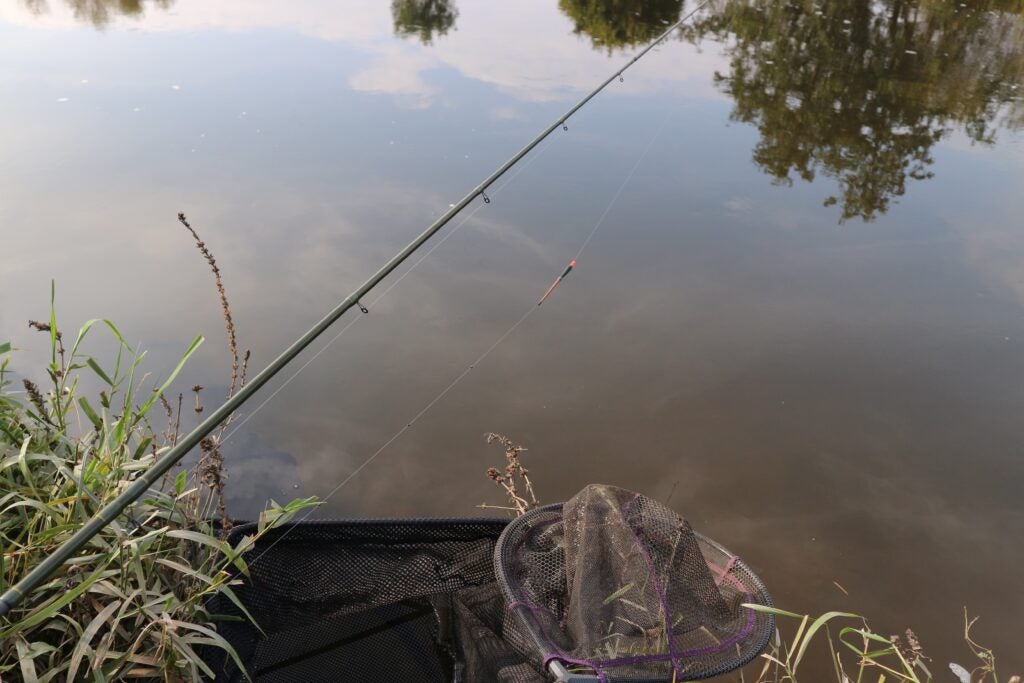

Like Hardy Marksman, the maxim with Thomas Turner Contemporary Classic coarse rods was to use the best blends of high modulus carbon, without any undue frills, to produce products that would be a joy to fish with. This meant lightness, crisp actions, and beautiful balance, but not going to crazy extremes that would sacrifice strength. Some other rods might be a tad lighter, but the aim was for models that could cope with traditional venues and methods, without exploding if anything big was hooked. Having worked with many rod factories while with Hardy, I knew exactly where I could get what was needed. In fact, I had already started work on a third Marksman range when Pure Fishing bought the company. I had discovered a new type of nano carbon that’s stronger, never wanting to lock up under pressure, also retaining its fast nature after being tested to its limits. Only trouble was, the new owners decided to make Hardy game-only.
RING SCIENCE
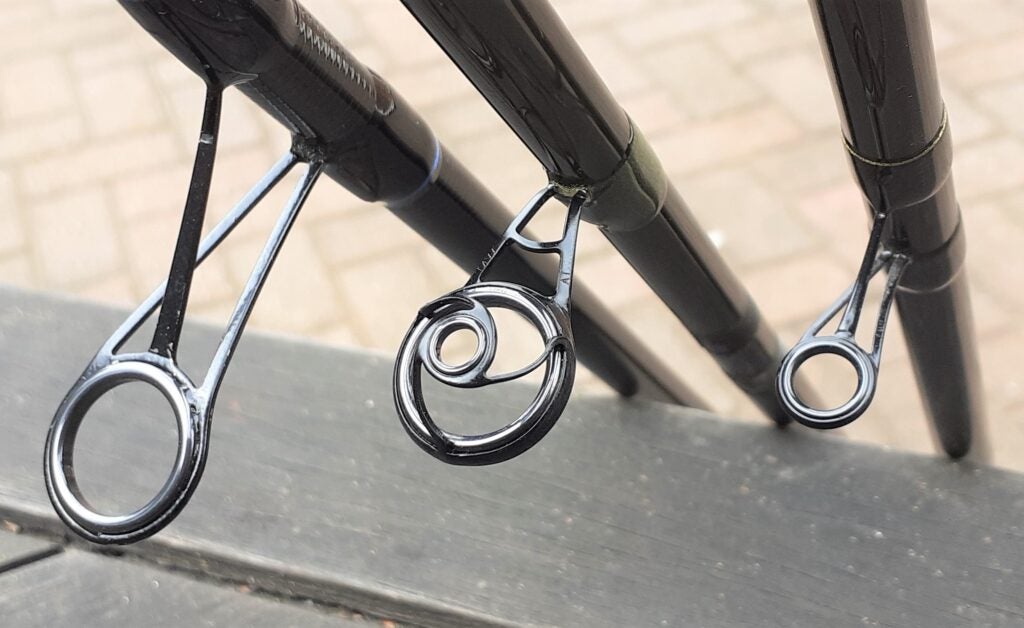

Some companies make up names for the rod rings they use. There are only so many ceramic lined designs out there, all very similar, so the hope is a scientific-sounding title will sell more of the rods they end up being attached to. It’s mostly sales hype. I decided against that by opting for trusty workhorse ceramic line guides, which mono or braid sailed through smoothly, without generating excess heat or friction. I’ve never rated certain types of highly expensive line guides anyway, finding some were rather harsh. They often damaged line, causing it to grate and coil prematurely when wound in. Another common feature, that doesn’t make any advantageous difference, is having over-large butt rings. The American Tackle Microwave design has proved that with its secondary inner eye, which channels line straight, creating less friction as it travels up the rod. I’ve tested it and got longer casts. Now I simply keep butt eyes a sensible size.
WHERE IT MATTERS
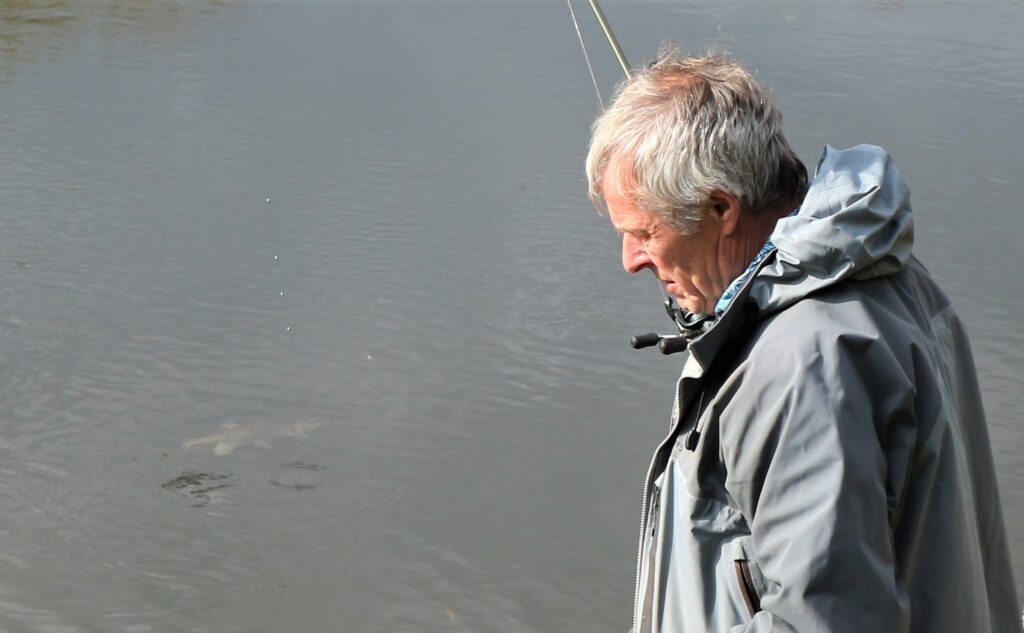

John Bailey is out on the bank more than I am with his guiding and filming work, so it makes sense to have him field-testing initial rod samples. They get a much more severe workout that way, and are put in various people’s hands for important feedback. Of course, I test the rods as well, which gives me a good excuse to grab some extra fishing time! It makes me laugh when I think back to being allocated an odd day or two for field-testing when I was working full time as a product developer. Really? How on earth can you properly test a whole range of rods in a couple of days? That’s certainly not the case here, after many months of being out there in wind, rain, snow and sunshine, on the most demanding of venues, catching fish up to specimen proportions. Getting new rods out on the bank makes it easier to see anything that needs tweaking. If something isn’t right, it quickly becomes apparent when something wild is attached.
ALL-ROUNDERS
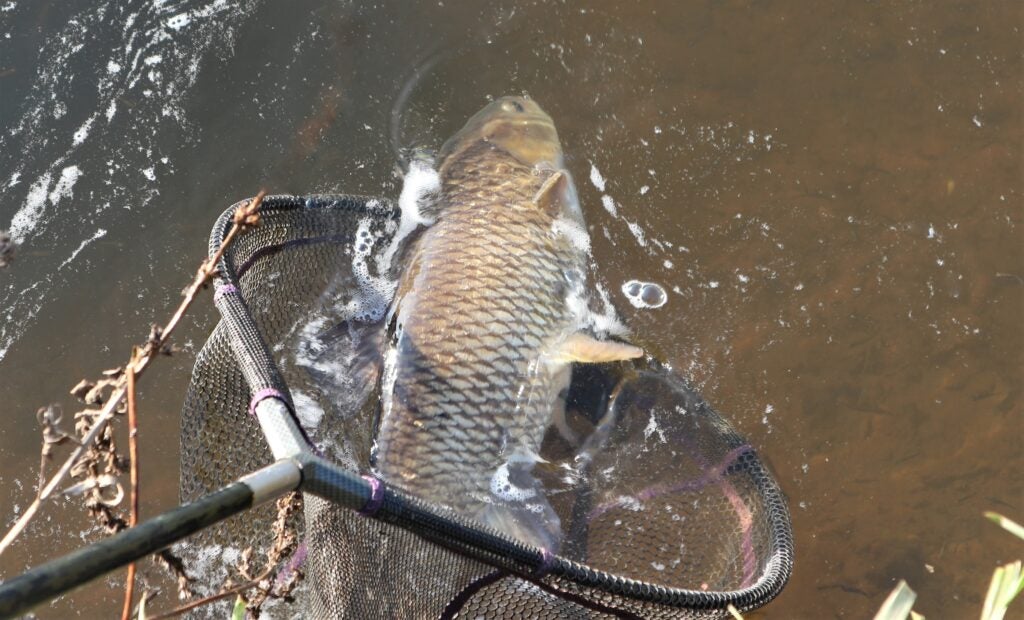

Some rod ranges are over-complicated, with several tweaked versions of the same thing. I much prefer the idea of having a design that can do most jobs, whether it’s a traditional 13ft float blank, a 12ft feeder model kitted out with several quivertips, an 11ft Avon designed for big fish, or a short 10ft bomb rod. I like being able to grab a favourite first choice model from my holdall, which I know can do what I want in most situations. It becomes like a familiar and trusted friend, something I can rely on, knowing exactly what it’s capable of. Some demands might require a more specialised approach, but again no need for several different versions of whatever that might be. I’ve learnt over the years to keep my fishing as simple as possible, having been lucky to enjoy the company of many great anglers. I always remember Frank Barlow telling me not to mess about with stick floats, just to let them do their job and fish like this would result.
CRAZY STUFF
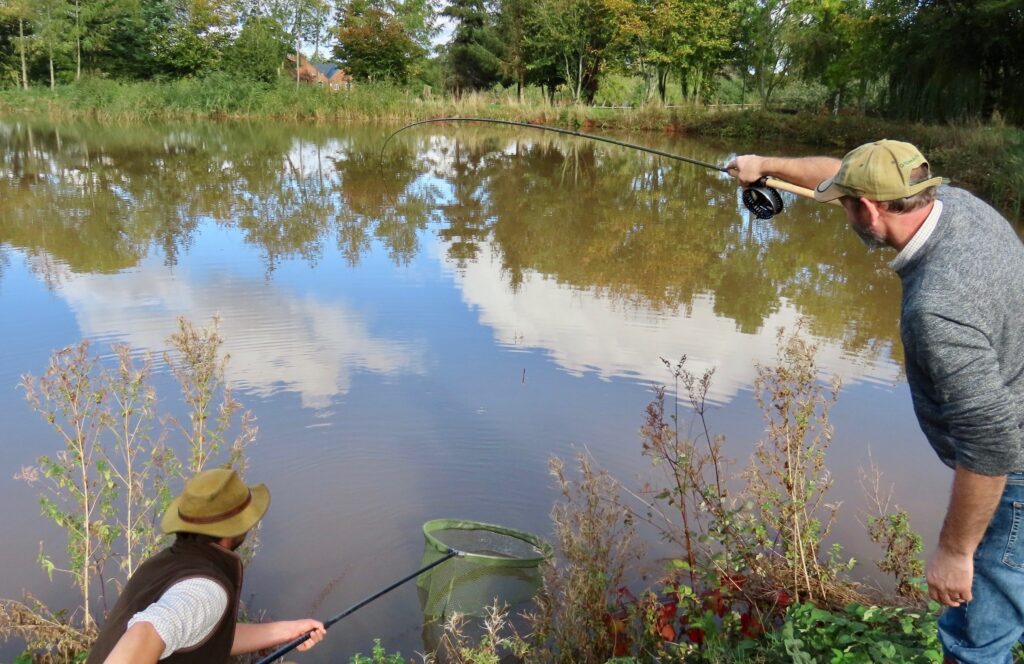

I have trouble watching many fishing videos. They get so deadly serious and seem to completely forget that angling can be lots of fun. Mates getting together and putting the world to rights, while enjoying catching plenty of fish, is a better option. Here we see a typical John Bailey and friends’ day on the bank, where it wouldn’t surprise me if at some stage rods were downed for a glass of wine and a sandwich. These guys were having a great time anyway. They were latching into wild carp, testing out a prototype Thomas Turner 14ft Float rod, combined with a traditional centrepin reel. If the blank could handle this, it wouldn’t be out of place on a river searching for barbel and big chub, or fishing down the margins on a big estate lake for tench. Nano carbons might be expensive, but they can absorb extreme pressure like this, being less brittle than standard high modulus carbon. These blanks don’t soften up after extended usage either.
DUAL ATTACK
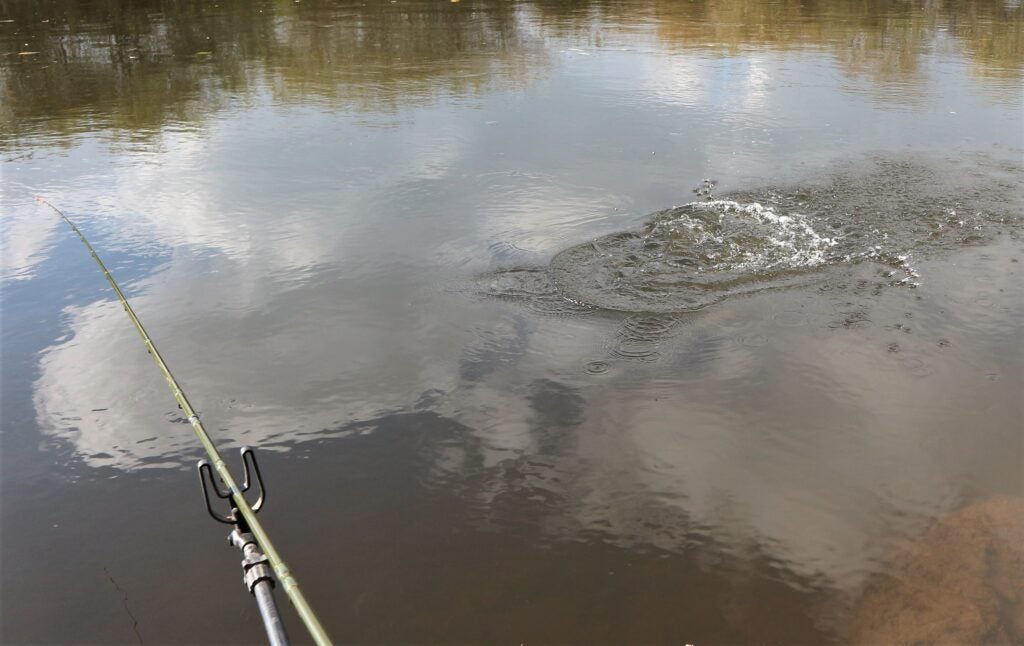

I was testing the new 12ft T.T. Quivertip rod, while John Bailey upstream was putting the 11ft T.T. Avon through its paces, quickly giving it a proper workout with feisty chub. The blank I was using had equal lengths with a quivertip installed, allowing convenient pre-tackling. It’s supplied with a generous choice of four super-sensitive carbon quivertips, covering 3/4oz, 1oz, 1.5oz and 2oz ratings. This makes it equally at home launching out feeders on lakes, gravel pits or reservoirs, as it is casting heavier end tackle on powerful rivers. In this instance it was comfortably casting 50g loadings, absorbing the most powerful of lunges from anything big that came along. J.B. was crooning about the 11ft Avon, saying it was already his favourite rod for targeting big chub and barbel, especially when touch legering on flowing water. A lot of strong rods like this are all about brute strength, while this classic features a far more subtle action.
BOMBING IT
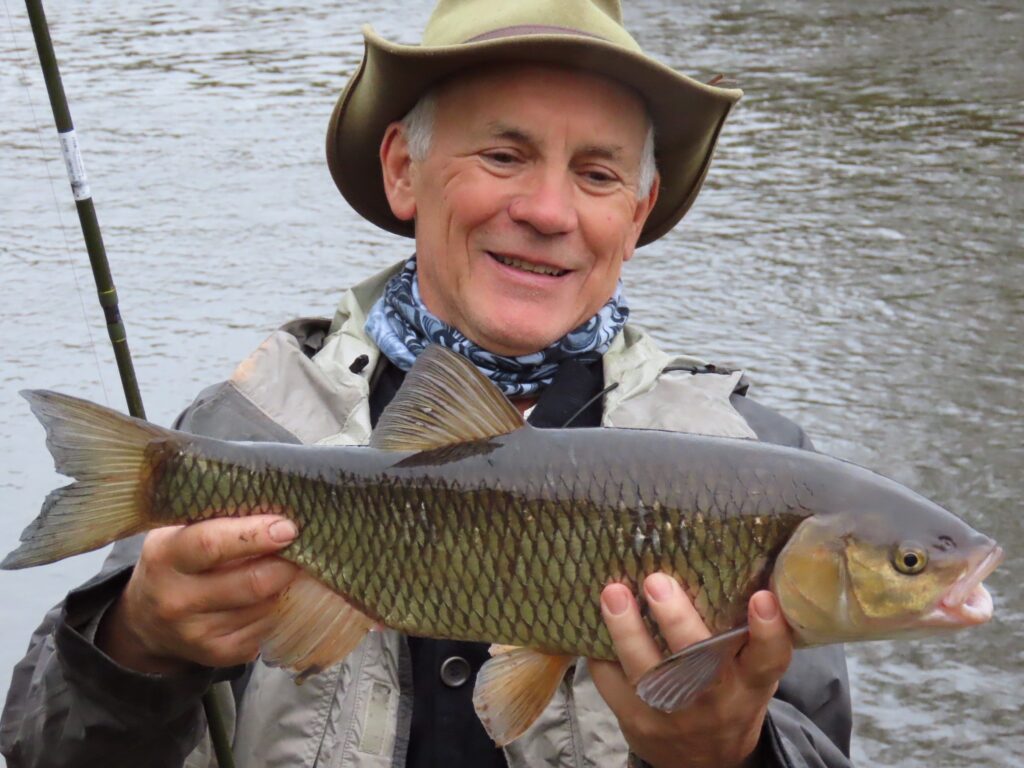

The new T.T. range includes a 10ft Bomb rod. The traditional “bomb” title doesn’t exclude being able to use small swimfeeders by the way. It’s designed with finesse in mind for winkling out bites when the fishing is hard, on occasions when fish are just plain difficult to catch. The super-lightweight and slim blank has enough backbone to flick out light to medium leger weights, or small feeders with up to 20g loadings. A generous four solid carbon quivertips cover wide-ranging requirements with their 3/4oz, 1oz, 1.5oz and 2oz ratings. Where this superb rod really comes into its own is with its surprising strength, combined with a lovely through action, which comfortably cushions light tackle against the lunges of bigger fish. During testing John Bailey landed a sizeable barbel from a raging big river and his mates caught chub. I targeted specimen-sized roach with no problems, just absolute delight in using such an awesome featherweight wand of a rod.
AVON SPECIAL
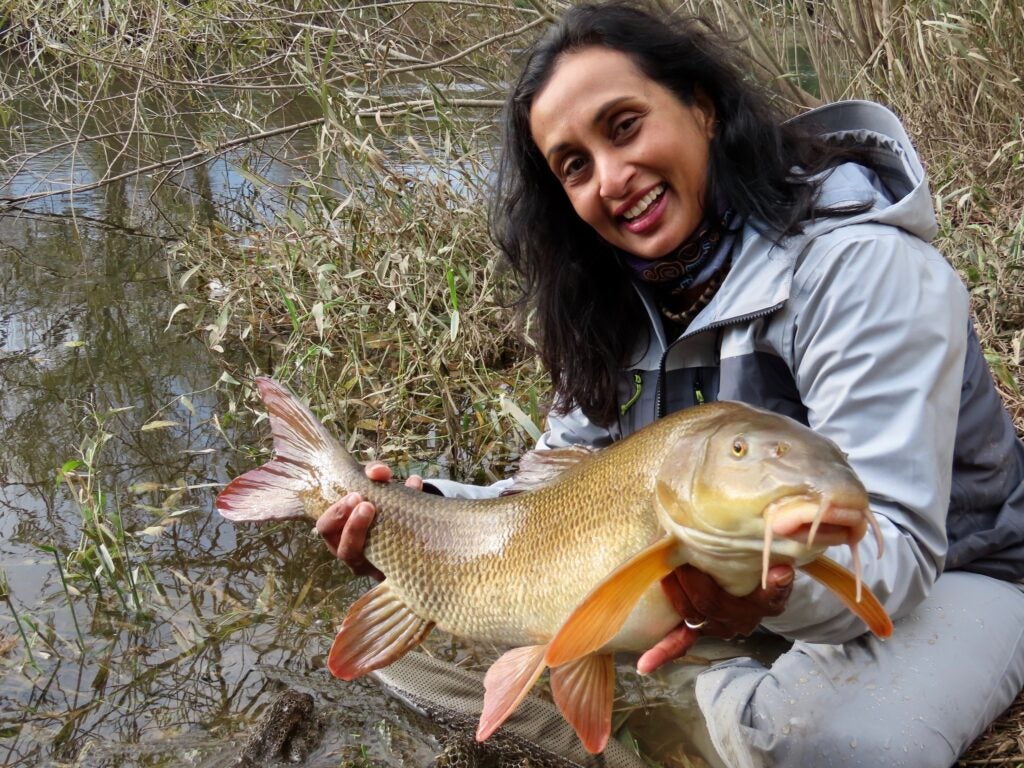

The 11ft Avon has managed wonderful fish like this with ease. It’s already John Bailey’s favourite for targeting big chub and barbel, especially when touch legering on flowing water. Every movement of the end tackle, and any attention hook baits receive, is clearly transmitted down the high modulus nano carbon blank. This rod is much faster than original Marksmans, being made from superior modern materials, retaining a forgiving nature when playing and controlling big fish. It bends progressively, never wanting to lock up, retaining plenty of low set power in reserve. John says this is the best Avon he’s ever had the pleasure to use and has well proved the point, seeing the first prototype land loads of big River Wye chub and barbel, including this huge double figure fish. A lot of rods in this category are too stiff in my opinion. This new classic can match most of them, but with a far more subtle and surprisingly lightweight action.
ON THE BANK
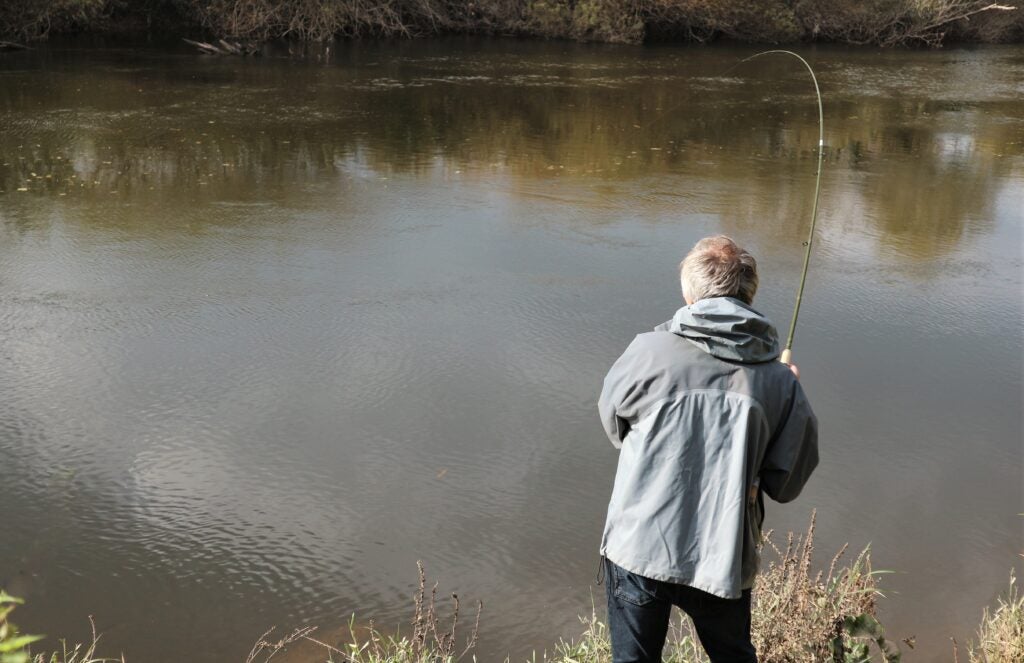

I was working on a magazine feature on a famous fishery and recognised a sales rep for a big tackle company in the distance. We had met several times and I walked around to say hello. When the chap saw me coming, he hurriedly packed a green rod away. Standing there having a chat, I could see the distinctive cordura tube of a Hardy Marksman poking out the end of his rod holdall. It often amuses me how rods can become status symbols, when in reality they are just essential tools for the job of catching fish. I think it helps making such weapons pleasing to look at and nice to own, although the rods I design don’t need lots of words on their butt sections, just their title, length and test curve – where applicable. I’ve seen rods with almost complete stories printed on them, which always makes me suspicious they might be hiding something. I like my rods to blend in with their surroundings, not stand out like sore thumbs.
FLOAT POWER
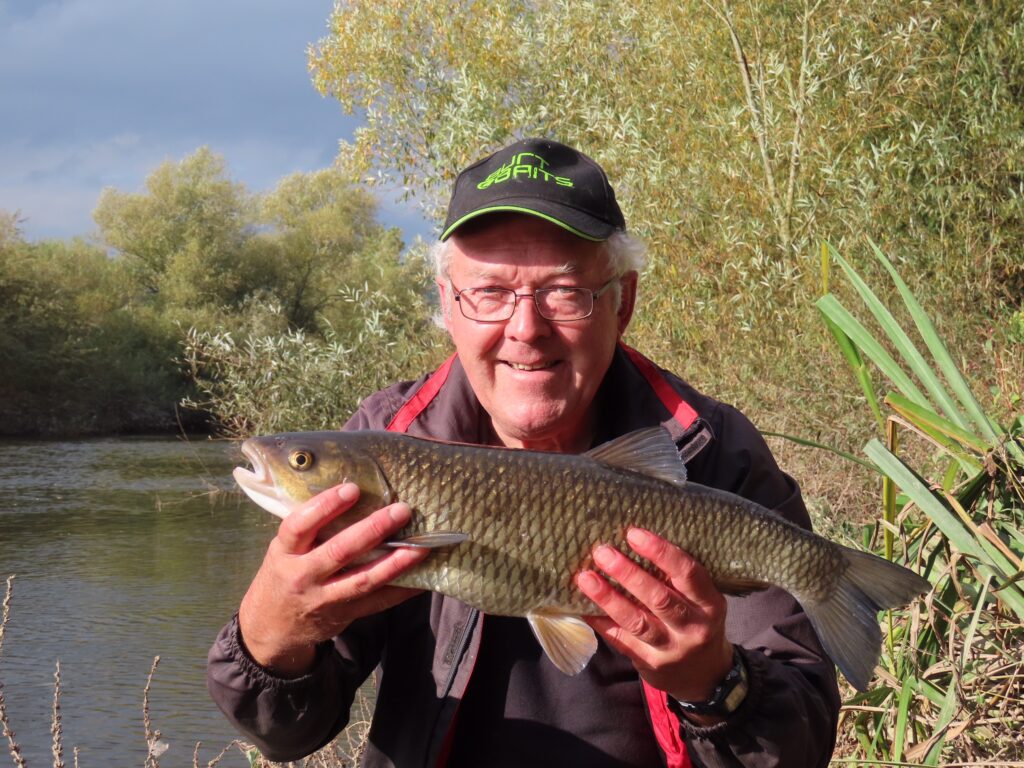

The Thomas Turner Classic 13ft and 14ft Float rods balance perfectly in the hand, without being too lightweight to sacrifice strength. These wonderful blanks can be held all day, whether punching wagglers out on stillwaters, or running stick floats through on rivers. They are a joy to use, crisp when mending or sinking the line and super-fast when hitting bites. They comfortably handle big fish, never wanting to lock up thanks to their state-of-the-art nano carbon construction. During early testing, some whopping river chub were landed on surprisingly light tackle, the same applying to wild stillwater carp. They really are go-anywhere, do-anything float rods, destined to be the first choice from any serious angler’s holdall. They can happily be used with light, delicate floats – right through to big loaded wagglers and sliders. They lap up punishment from big fish, having a unique balance of a forgiving nature, matched with power in reserve.
JOINING THE CLUB
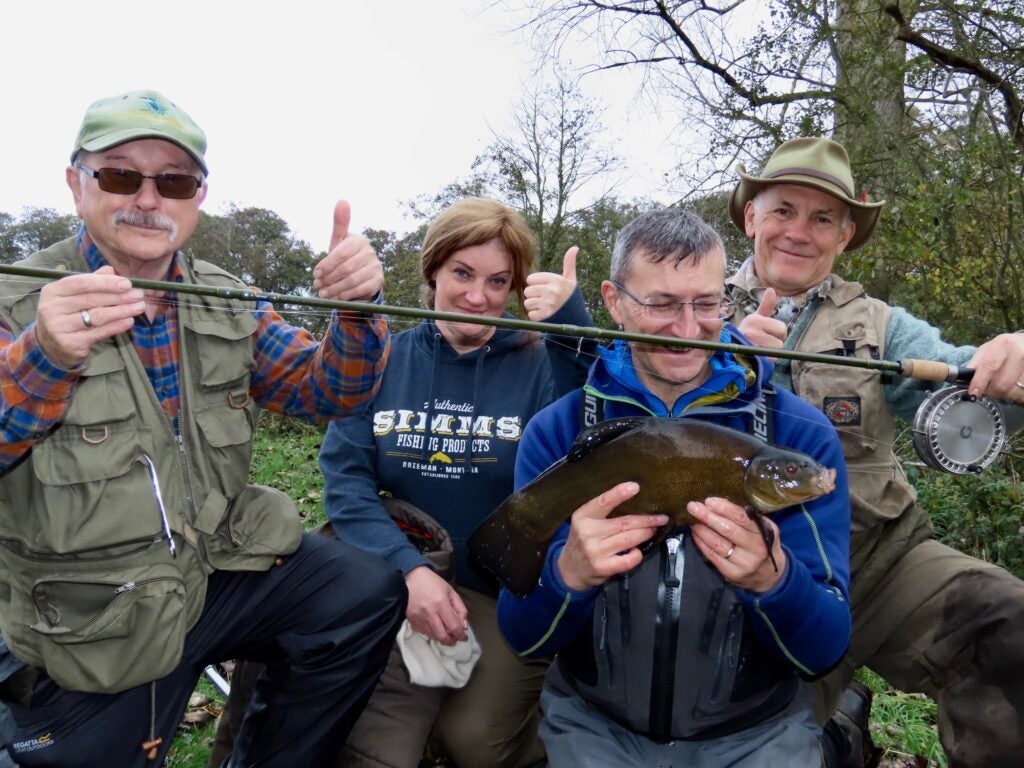

Hardy Marksman coarse rods were launched in 2006, becoming hugely popular, but surprisingly, production was halted when Pure Fishing bought the company. This move left lots of coarse anglers disappointed. The demand for Marksmans has never ceased and second-hand ones have held their value exceptionally well. Because Thomas Turner can’t source enough of these wonderful rods, they are making their own version. Latest nano carbon technology has the ability to make rods lighter, faster in action, and yet stronger. That’s exactly what has been achieved with the new range of T.T. Modern Classics. In a nutshell they are “Big Boy” rods, designed with natural venues in mind, but of course they can be used just about anywhere. They feature beautiful actions and a classic finish, crafted for discerning anglers, supplied in custom-made protective Cordura tubes. Each rod is fitted out with hard-wearing, smooth-running high-tech ceramic lined guides and top-grade cork handles. Quite simply, they make fishing an even more pleasurable experience.











